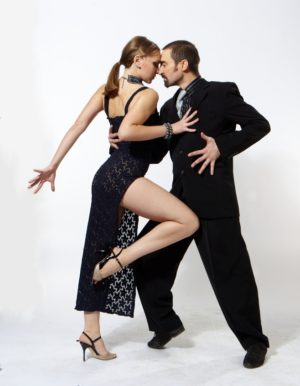One of the reasons I like tango is that I associate it with a certain feeling for style. Conjuring up a time that was not better but certainly more elegant.
More elegant certainly not everywhere where people danced in the streets and courtyards, but certainly in the milongas of the “golden age” of tango.
Back then it was unthinkable to go to a milonga badly or carelessly dressed.
And this wasn’t just valid for women.
With the blatant excess of women at that time, a man who was not well groomed and did not have a minimum of good manners had little chance of ever dancing with a woman.
Today that has changed. There are usually more women than men at the milongas and the pressure on men to maintain a certain style has decreased significantly.
That is unfortunate. Because as I said, in my opinion tango lives from the fact that it retains a certain style.
It doesn’t have to be old-fashioned. For example, anyone who knows the often freaky and creative outfits of “Chicho” Frumboli knows that style doesn’t have to be dowdy.
Baggy military trousers combined with a slightly worn-out baggy T-shirt and a towel soaked in sweat hanging from the waistband or the hip-pocket of the trousers may indicate a personal touch, but not an excessive sense of style.
Yet for me, style doesn’t just mean a reasonably well-groomed appearance, but also knowing and adhering to the codes of a milonga.
This does not mean that we must readily adopt everything that was valid a hundred years ago.
But many of the traditional milonga rules contribute to the fact that being together at the milongas is more respectful, friendlier, more pleasant for everyone and, as banal as it may sound, makes it a nicer experience.
An experience that I wish for every time I go to a milonga or a tango ball.
You might also be interested in this posts.
Is there a foolproof way to avoid a “no”, inviting someone to dance?

